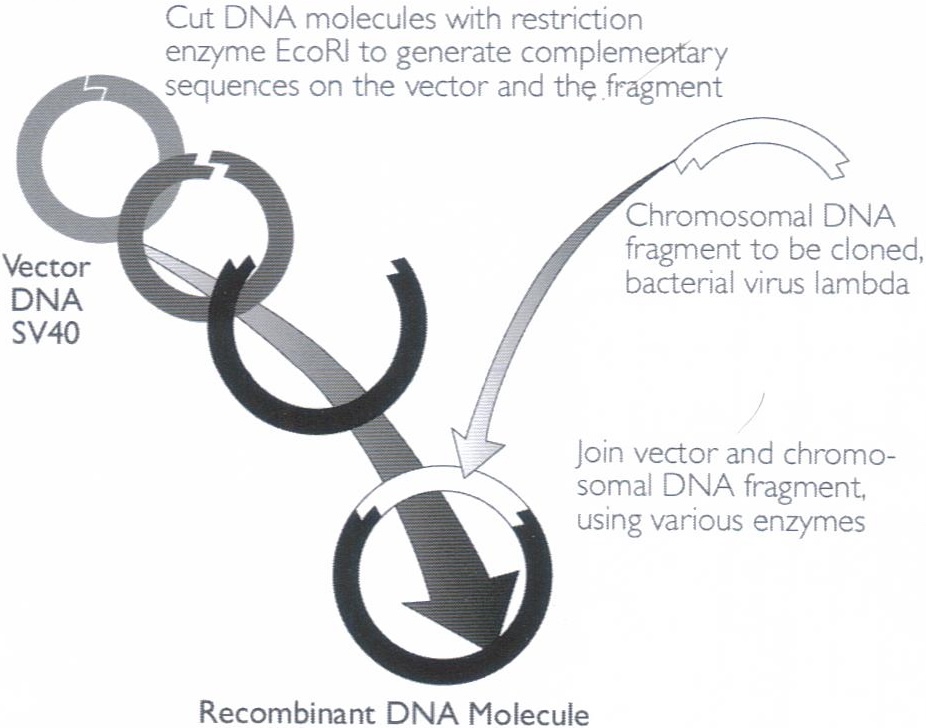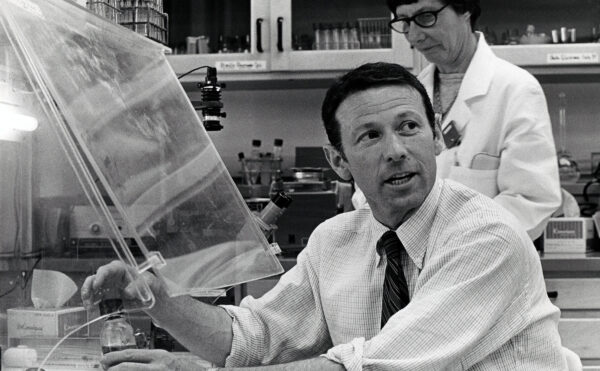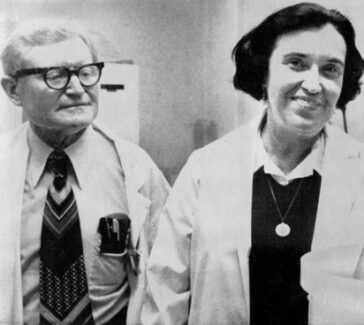Paul Berg
In 1971 Berg’s landmark gene-splicing experiment opened the door to the invention of recombinant DNA technology.

Recombinant DNA technology led to a new era of biotechnology start-up companies. This technology allows genetic material from one organism to be artificially introduced into the genome of another organism and then replicated and expressed by that other organism. Paul Berg (1926–2023) won the 1980 Nobel Prize in Chemistry for his work in this field, sharing the award with Walter Gilbert and Frederick Sanger.
Early Life and Education
Berg grew up in Brooklyn, New York, in the 1930s. His interest in science was stimulated by his reading of Paul De Kruif’s Microbe Hunters (1926) and Sinclair Lewis’s Arrowsmith (1925). After graduating from high school at the age of 16, he had some difficulty deciding what and where he should study. Perusal of a catalogue from Pennsylvania State College (now University) alerted him to the existence of the field of biochemistry, and he was soon on his way to Penn State. In the middle of his college years his enlistment in the U.S. Navy was activated, but World War II ended before he saw combat.
Berg returned to Penn State to complete his degree and then went on to Western Reserve University (now Case Western Reserve) to get a PhD in biochemistry. He pursued postdoctoral research on enzymes and in 1955 was appointed to the faculty at Washington University, where he became a leader in deciphering the biosynthesis of proteins on the basis of codes carried on deoxyribonucleic acid (DNA) and ribonucleic acid (RNA) molecules (see Maxine Singer).
Gene Splicing

In 1959 Berg joined the faculty of Stanford University. There he became interested in the genetics of microbes and took a leave to study at Renato Dulbecco’s laboratory at the Salk Institute, where he learned the techniques of animal-cell culture. Dulbecco had already shown that certain viruses induce a cancerous state in an infected cell by taking over the expression of the genetic information of that cell for their own reproduction. Like other scientists at the time, Berg began to wonder whether it would be possible to insert foreign genes into a virus, thereby causing it to become the vector by which genes could be carried into new cells.
Berg’s 1971 landmark gene-splicing experiment (see Figure) involved splicing a bit of the DNA of the bacterial virus known as lambda into the DNA of simian virus SV40, whose natural host is the monkey. The DNA of both these viruses occurs in closed loops. In the first step of Berg’s experiment the loops were each cut in one place by an enzyme, EcoRI. Next, to make the ends of these now-linear molecules stick together again, they were modified by two other enzymes using a procedure developed by Stanford colleagues. Then the two types of DNA were mixed together where they rejoined into loops in such a way that the new loops combined DNA from each source.
Berg’s gene-splicing experiment resulted in the first man-made recombinant DNA (rDNA), as such molecules came to be called. The award ceremony for Berg’s 1980 Nobel Prize in Chemistry, shared with Walter Gilbert and Frederick Sanger, highlighted this work.
Recombinant DNA
Berg did not immediately take the step of introducing the rDNA into another organism because of the public controversy over the potential dangers of such experimentation. The fear was that rDNA carrying a dreaded gene—for example, for the creation of cancerous tumors—might escape the laboratory in some common bacteria and be spread everywhere.
As chair of the National Academy of Science’s Committee on Recombinant DNA Molecules, Berg played an active role in the debate among scientists and with the public about potential limitations on such research. In the 1970s the National Institutes of Health issued guidelines for the safe conduct of rDNA research. Over time these guidelines have been eased, as more experience has shown the hazards to be far less than imagined.
Over the years Berg consulted for several biotechnology companies. In 1980 he helped found DNAX, a biotechnology research institute. Berg’s later research at Stanford focused on the mechanism of repairing DNA damage, and he continued to influence federal policy regarding stem-cell research, biotechnology, and human cloning.
Further Recognition
In 2005 Paul Berg received the Biotechnology Heritage Award from the Chemical Heritage Foundation (now the Science History Institute) and the Biotechnology Innovation Organization. The honor was given in recognition of his pioneering work in gene splicing, one of the foundations of biotechnology; the award also recognized his work in teaching and medical research and as a leader who helped lay the ethical foundations of the biotechnology enterprise. He also was awarded the 2008 American Institute of Chemists Gold Medal.
You might also like

DISTILLATIONS MAGAZINE
An Absolute Good?
Paul Berg, controversy, and the engineering of life.

EVENTS
The Spirit of Asilomar and the Future of Biotechnology
Experts will gather to reflect on the last 50 years since the 1975 Asilomar Conference on Recombinant DNA.

DISTILLATIONS PODCAST
Science, Interrupted
The story of the 1975 Asilomar Conference on Recombinant DNA.



